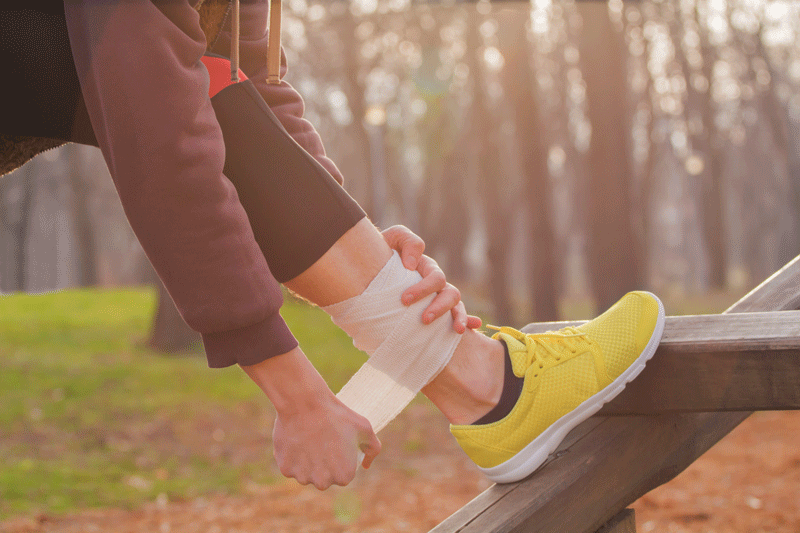Summer is here. Maybe you took an exercise hiatus during the winter and are thinking about getting back into your routine soon. Or maybe you haven’t exercised in a year or two because your initial winter hiatus two years ago never quite ended. Maybe you took a long break from working out not because of the cold weather, but because of an injury.
No matter your situation, we have 9 tips to help make your transition back to exercising safe and effective.
Tip 1: Pay attention to your form
Proper form is always important, but doubly so if you are recovering from an injury. The last thing you want is to reinjure yourself. If it’s been a while since you exercised, it’s worth a quick review to make sure that you remember how to hold and move your body precisely so that you don’t end up injuring yourself.
Regardless of the exercise, keep in mind:
-
Keep your spine long. This ensures good posture without overcorrecting.
-
Relax your shoulders. You’re probably not even conscious of how tight your shoulders might be thanks to stress. Relax your shoulders so that they’ll sit naturally.
-
Move from your hips. If you’re doing full-body and/or lower-body exercises, movement starts from your hips. Keep your spine long and move from your hips to avoid lower-back involvement.
Tip 2: Start slowly
If you were running 10 miles easily before your injury or your break, it’s not fun to hold off on going out for a 10-mile run again. Your body needs to build back up to that though. Start at about 50 percent of your "normal" level, and increase only 10 to 15 percent each week.
A caveat here is that if the site of your injury hurts during or after, you’ll want to reevaluate what you’re trying to do so that you don’t reinjure yourself. You might also want to begin with easier exercises than you’d done before your injury or your time away from exercising. Also consider decreasing the weight and range of motion of the exercises that you’re doing.
Tip 3: Don’t skip the warm ups and cool downs
Warming up and cooling down help prepare your body to exercise and cool downs help your body return to its pre-workout state gradually. You should spend at least 3–5 minutes warming up and cooling down. Make sure that you incorporate deep, long stretches of at least one minute into your cool downs.
If you’re exercising after an injury, you might also want to consider using a foam roller to provide deep-tissue massage to the muscles around the injury. Applying an ice pack for 20 minutes or going for a swim in a cold pool are ways to get the benefits of popular cryotherapy treatments without spending a lot of money.
Tip 4: Cross train
If you have injured yourself, cross-training is a great way to get exercise while also allowing your injury to properly heal. Did you injure your knee or leg while biking? Swimming is a great low-impact exercise to add to your routine.
Did you hurt your wrist or arm while golfing or playing tennis? Consider going for a hike or doing another exercise that works your lower body so that you can continue to exercise while not reinjuring yourself.
Tip 5: Pay attention to pain
Pain is your body’s way of telling you that something isn’t right. No matter how frustrating it is, don’t ignore it. Don’t take painkillers before working out so that you’ll be able to tell if the site of your injury (or somewhere else) hurts. If you start feeling pain while exercising, there are several things you can try before stopping:
-
Limit your range of motion to stay in a pain-free range.
-
Switch to a different, pain-free exercise.
-
Decrease the amount of weight you are using.
Tip 6: Diversify your workout
This tip is specifically for getting back into a routine after taking a break, but if you’ve injured yourself, once you’re comfortable with your post-injury workouts, it can’t hurt to incorporate this, too: Your workout should include three components: cardiovascular endurance, resistance training, and flexibility.
Miami-based trainer Kellie Sikorski recommends this combination because it will help you reach your workout goals. It will also promote cross-training and will also keep you from getting bored, and you’ll be less likely to take another break.
Tip 7: Find a friend to join you
Some people like exercising alone because they can clear their heads. If you’re worried about sticking to a routine and staying motivated, consider working out with a friend. It can keep you accountable, motivated, and it’s definitely more fun than working out alone. If you’re working out after an injury, having someone with you to spot you can be helpful, too.
Tip 8: Set goals
Another way to stay motivated is to set goals and then work to meet and exceed them. Sikorski recommends choosing goals that are S.M.A.R.T.: They are specific, measurable, attainable, realistic, and time-sensitive. S.M.A.R.T. goals will be easier to reach.
Do you want to eventually run a 5K or a marathon? Swim a large number of laps without stopping? Setting S.M.A.R.T. goals that allow you to build up your strength and stamina while starting by working toward a shorter distance or fewer laps are great ways to begin.
Be sure to celebrate your victories and not beat yourself up if you don’t meet your incremental goals as quickly as you’d hoped. You’ll get there!
Tip 9: Get plenty of sleep and the proper nutrients
Working out makes you tired, and so it’s important to make sure that you’re getting enough sleep so that your body can rest, recover, and get used to your increased activity level. Make sure that you’re staying hydrated before, during, and after workouts. Also, don’t forget to get enough nutrients.
Injured from a workout? Contact the Johnson Memorial Health Orthopedic Specialists for an evaluation.

